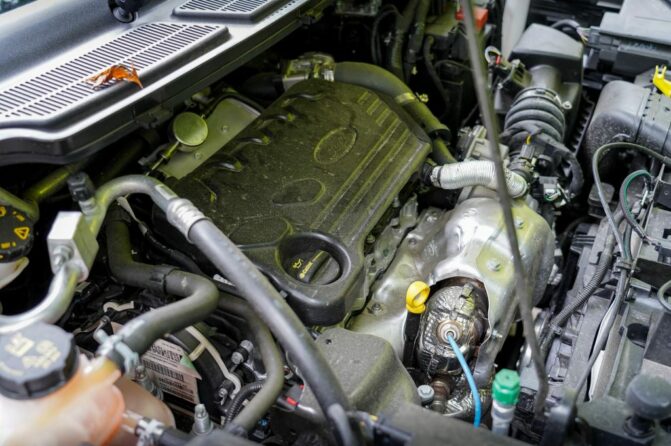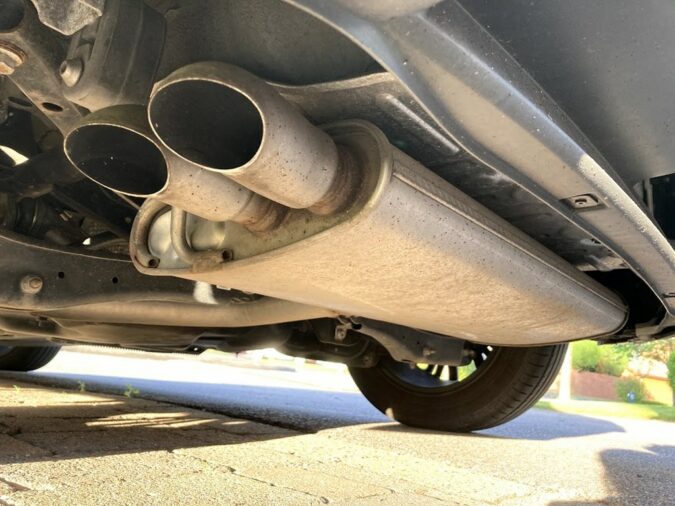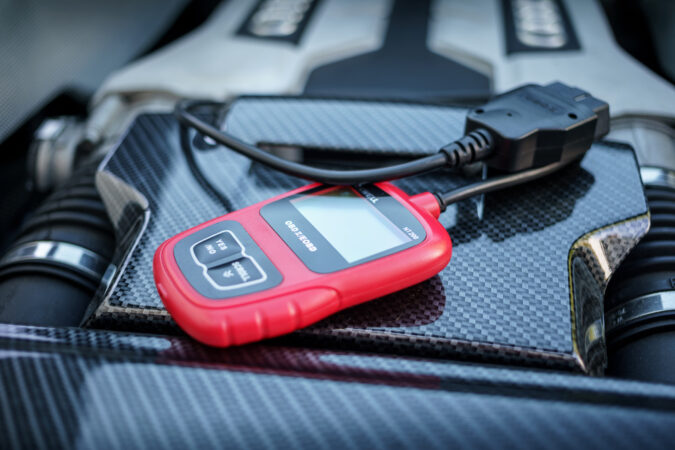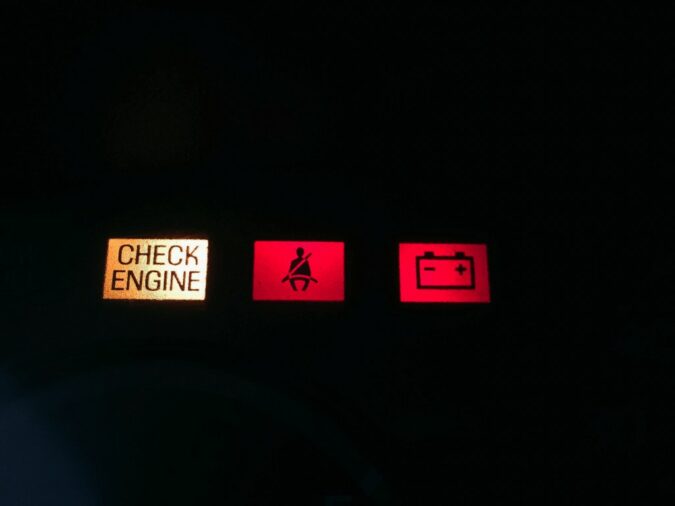Most modern cars have over 100 control modules that operate everything in a modern car. Most sensors are in engine management. These sensors regulate everything in the engine for optimal performance, from temperature control to O2 emission. Engine control systems regulate their performance using data from a range of sensors. One such sensor is the bank 1 sensor 2 which we’ll discuss further as you read on.
On your automobile’s computer device, you’ll notice an Onboard diagnostic (OBD) scanner connected to it with an access port close to the driver’s seat. Once the gas cap or the catalytic converter is bad, that could switch on your automobile’s check engine light. This failure is detected by the Onboard diagnostics (OBD). You’ll need to set aside a reasonable amount of cash to exchange it.
The OBD 2 scanner is responsible for showing what is going on with your automobile’s engine, transmission, and other vital parts. Most likely, your automobile mechanic can only access this information because of the technicality.
When you use a scanner to diagnose an engine problem in your vehicle, it is important to understand the terms and fault codes. This article discusses the significance of this and how to manage it for optimal engine performance.
Oxygen Sensor Bank 1 Sensor 2
Bank 1 Sensor 2 is the second of two oxygen sensors on the exhaust pipe. It monitors the composition of exhaust gases located behind the catalytic converter. There will be harm to the engine’s operation and the car’s general performance if this sensor fails.
The car engine functions as a single unit; It’s broken down into banks and cylinder numbers to make it easier to spot problems. The bank indicates which side of the catalytic converter the O2 is located ( either bank 1 or bank 2). At the same time, the sensor number indicates the O2 location. Either before (sensor 1) or after (sensor 2) of the catalytic converter.
Today’s automobile engines are available in two configurations: inline and transverse. On inline engines, all cylinders are arranged in a row, with a one-cylinder head for intake and exhaust components. Four-, five-, six-, and eight-cylinder engines are common in modern automobiles. The four-cylinder engines have a two-sensor configuration, which improves efficiency and helps them meet emission standards.
What Is An Engine Bank?
Engine sides are also called banks, with a corresponding number. The engine banks show the engine’s two halves. Bank 1 is closest to the radiator and serpentine belt, whereas bank 2 is on the other side. The entire engine is one bank in most inline variations. Two engine banks and two catalytic converters are in V6 and V8 engines, with one converter for each bank.
The transmission of an inline-positioned engine faces the back of the car. Cylinder 1 will be closest to the radiator and serpentine belt, while bank 2 will be on the opposite side.
Configuration altered in the transverse-mounted engine. The position of the first cylinder is either the left or right wheel. Because the radiator is in the front, the only way to tell which cylinder is the first is to look at the serpentine belt’s position.
Different autos have their bank 1 and bank 2 in different places. They all have one thing in common: bank 1 is always referred to as the “side” where the first cylinder is.
Where Is The Bank Location?
Banks identify which side of the engine and exhaust system is faulty. Locate cylinder 1 to determine the location of bank 1. The steps are as follows:
1. Examine The Engine Compartment
Examine the crankcase or the ignition cables. But, not every vehicle has a mark on the crankcase or ignition cables.
Make sure numbered ignition cables are not tampered with because there is a chance for them to be moved and returned in the wrong order.
2. Consult Someone Who Knows
Inquire with an authorized dealership, a mechanic who is familiar with your vehicle, or a car forum. You can also look through the car service manual.
Check that the information provided is correct for your car model and engine. A detailed answer is important in a car forum. For example, stating that bank 1 is on the driver’s side of the car may be incorrect. If the author is from the United Kingdom, they drive on the left side of the road.
3. Use An OBD2 Scanner
An OBD2 (On-Board Diagnostic) scanner is useful in locating and diagnosing this. Start by connecting your OBD2 scanner and clearing all the faulty codes. Unplug one of the O2 sensors. The code displayed due to the disconnected oxygen sensor will also state which bank is affected.
Bank 1 Sensor 2 Upstream Or Downstream
The amount of oxygen in the exhaust gases that escape the engine is measured by your car’s oxygen sensor (O2 sensor). This device provides real-time information about the amount of unburned oxygen in the exhaust system, used to determine the proper air-to-fuel ratio for the car’s engine.
In 1976 installation of the first O2 sensor was on Volvo 240. The location of the O2 sensor is in the exhaust manifold and measures the amount of unburned oxygen in the exhaust as it exits the engine. That is a method for determining the fuel mixture. It tells the computer whether the fuel mixture is lean (with more oxygen) or burning rich (with less oxygen)
Modern 4-cylinder engines use a system with two oxygen sensors to boost the economy and meet emission rules. The number of o2 sensors in an automobile varies, although all cars contain at least two. The position of these two sensors is the only distinction between them. That is because each car has at least one upstream (sensor 1) and one downstream o2 sensor (sensor 2) (sensor 2). The number of o2 sensors determines the number of catalytic converters. Each catalytic converter has two sensors.
What Is The Importance Of The O2 Sensor
O2 sensors provide more data to the car’s computer unit, allowing it to check the air-fuel ratio to help your car reduce emissions. They also enhance fuel efficiency and keep the engine running at peak performance.
If the oxygen sensor fails, the computer cannot make essential changes and will run with less information about your car’s O2 state. That will not be good for your engine.
How Does Bank 1 Sensor 2 Work
All oxygen sensors work on the same basic principle. Each sensor depends on a probe that houses a sensing element. The difference in oxygen levels between the exhaust and outside air generates a voltage as exhaust gases pass through it. Voltage flows through the ceramic bulb because of these differences. The higher the voltage reading, the larger the difference.
Depending on the driving conditions, these values range from near zero to one volt. Downstream sensors should read around 0.45 volts after the engine and catalytic converter have reached operating temperatures.
If the bank 1 sensor 2 is not producing any voltage activity during the lean or rich testing periods, the sensor is not responding. In that case, the check engine light will illuminate, and the ECU will conclude that there is a problem.
What Is The Voltage Of Bank 1 Sensor 2
The voltage ranges from 0.1 to 1 volt, depending on the operating conditions. An oxygen sensor produces up to 0.9 volts when the fuel mixture is rich. When the mixture is lean, the sensor output voltage falls below 0.2 volts. When the air-to-fuel ratio is approximately 14.7 to 1, the sensor will read around 0.45 volts.
Before generating a voltage signal, the oxygen sensor must be hot (600 degrees or higher). Many oxygen sensors contain a small heating element to help them reach operating temperature faster. The heating element also keeps the sensor from overheating during prolonged idle.
Using a diagnostic tool with live data features or a multimeter, you can check these values. Most modern oxygen sensors contain a heating element, which aids in achieving running conditions faster.
Bank 1 Sensor 2 Location
Regardless of the Bank, all oxygen sensors have the same naming convention. The location of sensors 1 and 2 distinguishes them. Bank 1 sensor 2 is usually accessible from beneath the vehicles.
Scanning a diagnostic trouble code(DTC) can detect O2 sensor problems and select the correct bank. This sensor as the DTC code signifies is on one side after the catalytic converter. Bank 1 Sensor 1 indicates that the location of the O2 sensor is on either side of the catalytic converter, which is cylinder 1.
With the same logic, Bank 2 sensor 2 indicates the O2 sensor is on the other side of bank 1, after the catalytic converter.
The bank 1 sensor 2 location on a V6 or V8 engine with two catalytic converters is usually on the passenger side, after the catalytic converter. If cylinder 1 is on the driver’s side, it will be on the same side after the catalytic converter.
Upstream Vs Downstream O2 Sensor
The upstream sensor is the O2 sensor 1, located between the engine and the catalytic converter. It is in charge of determining the composition of raw exhaust gases. The electronic control unit (ECU) then uses this information to adjust the air-fuel mixture.
The downstream sensor is oxygen sensor 2. It’s found behind the catalytic converter. It measures the composition of exhaust fumes, but the ECU uses this information to determine whether the catalytic converter is working.
Faulty Oxygen Sensor
When there is a fault with the bank 1 sensor 2, the check engine light switches on in the dashboard. Your OBD2 scanner should be able to report the problem when connected. The source of faults in a bank 1 sensor 2 can come from the following:
Dirt And Soot Buildup On Probe
The buildup of dirt and soot on the probe causes oxygen sensor failure. This makes the probe produce inaccurate readings. Cleaning off the buildup would only provide a temporary solution. It is best to replace the sensor completely.
Heater Failure
Another possibility is that the heater has burned out, causing a corresponding fuse to blow.
Corroded Connector And Damaged Wiring
Other potential factors include common sensor issues such as damaged wiring and loose or corroded connectors.
How To Detect A Bad Bank 1 Sensor 2
Noticeable signals that show a fault in Bank 1 Sensor 2 include the following:
1. Check Engine Light Illuminates
Note that most engine-related issues will trigger your check engine light on the dashboard. A broken camshaft position sensor bank 1 is one example, as is a loose gas cap.
2. Poor Gas Mileage
Another problem it has in common with a faulty camshaft position sensor bank 1 is the poor gas mileage. Oxygen sensors tend to lose effectiveness over time. The engine becomes less efficient when the oxygen-to-fuel ratio becomes too rich or too lean. As a result, if you find yourself spending more money on gasoline than usual. Your bank 1 sensor 2 may have failed.
3. Rough Engine Sounds
A faulty oxygen sensor disrupts the engine’s timing, combustion intervals, and other critical functions. This makes the engine sound rough and run irregularly. Stalling and slow acceleration are two other effects.
4. The Vehicle Is Getting Old
As a car ages, its oxygen sensors can become covered with lead, sulfur, oil rash, fuel additives, and other combustion byproducts accumulated over time. That prevents the sensors from communicating with the ECU. Low-quality gasoline, which is not recommended for your vehicle, can also cause your sensors to fail more.
Replace sensors in a car that is less than 15 years old for every 60,000 to 90,000 miles. That will help to reduce pollution while also keeping the engine running. The sensors should be replaced every 45,000 to 65,000 miles if the vehicle is older.
5. Failure To Pass An Emissions Test
A faulty oxygen sensor causes emission test failure. If you notice a foul odor coming from your vehicle, you should replace your sensor as soon as possible. Otherwise, you will spend thousands of dollars on car repairs.
Bank 1 Sensor 2 Replacement
To pass the smog/emissions test, replace the faulty oxygen sensor. You can hire someone to do it for you, but you can also do it yourself.
A bank 1 sensor 2 replacement isn’t too difficult if you have the proper tools. Tools required include a jack, jack stands, an oxygen sensor socket, and penetrating oil. A mechanic is always available if you’re not confident enough to do this independently.
Steps To Follow For O2 Sensor Replacement
The Onboard Diagnostic (OBD2) scanner can read the error code and identify the faulty sensor(s). The sensor should be easy to find and replace if you consult your owner’s manual and carefully follow the instructions below
- Locate the O2 sensor’s connection port and unplug the cable.
- Connect a multimeter with a 200-ohm range to two black sensors. If there is no reading, the sensor is defective.
- Unscrew the old sensor by attaching the ratchet to the socket. Insert the cable through the slit.
- You should buy a new one with the same shape, length of wire and connection port as your old one.
- Apply a small amount of anti-seize to the threads of the sensor housing, but be careful not to put any on the sensor itself.
- Connect the sensor’s wires to the sensor and screw it back in place.
- Make a test run of the vehicle and look for any issues with the engine
What Are The Fault Codes Of Bank 1 Sensor 2?
These fault codes help you know what’s the fault with your bank 1 sensor 2. To read the fault codes, you must use an OBD2 (On-Board Diagnostic) scanner. The following are some of the more common OBD2 error codes:
| P0036 | Heated Oxygen Sensor (HO2S) Heater Control Circuit (Bank 1 Sensor 2) |
| P0037 | Heated Oxygen Sensor (HO2S) Heater Circuit Low Voltage (Bank 1 Sensor 2) |
| P0038 | Heated Oxygen Sensor (HO2S) Heater Circuit High Voltage (Bank 1 Sensor 2) |
| P0041 | Oxygen (O2) Sensor Signals Swapped (Bank 1 Sensor 2 / Bank 2 Sensor 2) |
| P0054 | Heated Oxygen Sensor (HO2S) Heater Resistance (Bank 1 Sensor 2) |
| P0136 | Oxygen (O2) Sensor Circuit Malfunction (Bank 1 Sensor 2) |
| P0137 | Oxygen (O2) Sensor Circuit Low Voltage (Bank 1 Sensor 2) |
| P0138 | Oxygen (O2) Sensor Circuit High Voltage (Bank 1 Sensor 2) |
| P0139 | Oxygen (O2) Sensor Circuit Slow Response (Bank 1 Sensor 2) |
| P0140 | Oxygen (O2) Sensor Circuit No Activity Detected (Bank 1 Sensor 2) |
| P0141 | Oxygen (O2) Sensor Signals Swapped (Bank 1 Sensor 2) |
If an O2 sensor is slow, biased, rich, or lean, it may fail to set a fault code. The only way to tell if the O2 sensor works is to test its response to changes in the air/fuel mixture.
Summary
After reading this article, you won’t have any trouble figuring out which sensor is in bank 1, no matter how many cylinders your engine has or how many O2 sensors it has.
This device is used to find the concentration of exhaust gases. The O2 sensors on every exhaust valve are divided into two banks, one for each bank. It is installed behind the catalytic converter.
For beginners, there’s just a single bank in inline engines. Also, V-shaped engines have two banks, and that’s the second type. These engines make up the recent automotive engines split into two categories.
The exhausts with double oxygen sensors are found on either side of the automobile. Note that the V-shaped engine contains the first cylinder, which is bank 1. At the same time, the next cylinder contains bank 2 by the side.
Finally, the engine and catalytic converter have an upstream sensor or sensor. And secondly, a downstream sensor or sensor 2.
Facts about Bank 1 Sensor 2
- Bank 1 Sensor 2 is the downstream oxygen sensor located behind the catalytic converter.
- V6 and V8 engines have two banks and two catalytic converters, and the bank that contains cylinder number one is called “Bank 1.”
- Bank 1 Sensor 2 is located downstream, usually right behind the catalytic converter.
- Bank 1 Sensor 2 measures the composition of exhaust gases and helps determine if the catalytic converter is working properly.
- A bad Bank 1 Sensor 2 will trigger the check engine light and cause codes such as P0136, P0137, and P0141.
- Bank 1 Sensor 2 should give steady readings of around 0.45 volts during idle or constant cruising.
- Replacing Bank 1 Sensor 2 is not difficult if you have the right tools.
- If there is no voltage from the downstream oxygen sensor, the ECU will assume there is an issue, and it will trigger a check engine light.
- Every sensor 2 or downstream sensor is always located after the catalytic converter.
- Oxygen sensors may fail due to dirt and soot build-up on the probe or issues with the heater, wiring, or connectors.
Final Thoughts On Bank 1 Sensor 2
Faulty bank 1 sensor 2 can bring you a lot of trouble if not changed in time. Thus, as soon as you get a sign that the sensor might malfunction, find it, get it tested, and then replace it.
Frequently Asked Questions About Bank 1 Sensor 2
Here are some popular FAQs:
Where Is The Bank 1 Sensor 2 Located
Regardless of the type of bank, all oxygen sensors have the same naming convention. The location of sensors 1 and 2 distinguishes them. The Bank 1 sensor 2 is usually accessible from beneath the vehicles. The diagnostic trouble code(DTC) signifies O2 sensor location is on one side after the catalytic converter.
What Is Bank 1 Sensor 2
Bank 1 Sensor 2 is the second of two oxygen sensors on the exhaust pipe. It monitors the composition of exhaust gases located behind the catalytic converter. There will be harm to the engine’s operation and general performance if this sensor fails.
What Side Is Bank 2 Sensor 1
Bank 2 Sensor 1 is on the engine’s side, with cylinder 2 in the firing order, and the O2 sensor is in front of the catalytic converter. It is located on either the driver or passenger side of a vehicle, depending on the model and driver orientation.
Is Bank 1 Sensor 2 Upstream Or Downstream
Bank 1 Sensor 1 represents upstream right/rear; while Bank 2 Sensor 1 represents upstream left/front. Bank 1 Sensor 2 represents downstream right/rear while Bank 2 Sensor 2 represents downstream left/front. Each bank has a corresponding sensor number.
What Is An O2 Sensor
An oxygen sensor (O2 sensor) in the car is the sensor that measures the amount of oxygen in the exhaust gases that escape from the engine. The O2 sensor is normally located on the exhaust manifold near the catalytic converter. In newer cars, there are usually two oxygen sensors for each catalytic converter (one before and one after). Older cars typically have a single oxygen sensor. Some modern vehicles have even more sensors.






